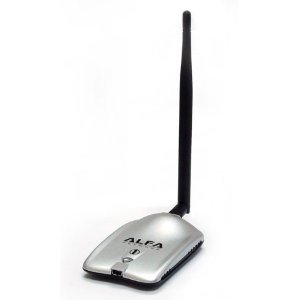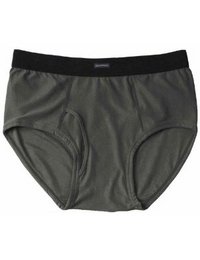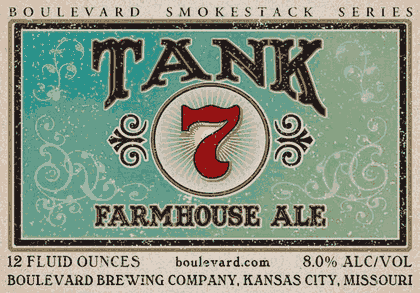I've been holding onto this article about three pervasive wine myths from The Professional Friends of Wine for a few weeks now, reading and rereading it. It's finally time to share it with you, loyal readers. Take a look, learn something new, and then I command you to go out tonight and drink some wine!
Recently in Articles Category
 It has been said over and over again in a hundred different books and articles about foreign countries: locals everywhere love seeing that you're taking the effort to speak their language. I've heard it repeated that it can be pretty difficult to learn a foreign tongue as an adult, but the benefits are manifold. You will certainly make more interesting friends and learn more interesting things when traveling, but you will also probably save money and hassle by being able to get along somehow.
It has been said over and over again in a hundred different books and articles about foreign countries: locals everywhere love seeing that you're taking the effort to speak their language. I've heard it repeated that it can be pretty difficult to learn a foreign tongue as an adult, but the benefits are manifold. You will certainly make more interesting friends and learn more interesting things when traveling, but you will also probably save money and hassle by being able to get along somehow.I firmly believe that we all have the ability to learn additional languages, even as adults. If you are going to travel in a foreign country, you owe it to both yourself and your nation full of hosts to give it your best effort.
Those interested in learning a language quickly might want to take a look at Tim Ferriss' technique for learning a language in three months, or his tips on getting by in a language in an hour. I'm not sure those techniques work, as I tend to be more of the "plod along and hope it sinks in" sort. Another good guide is available at How To Learn Any Language (also check out their excellent list of tips and tricks).
Finding a teacher or others to speak with can be invaluable. There are also a number of websites that can help you learn a language, such as smart.fm (in fact, look me up!). Word2Word has a large list of different language tutorials to explore. Frankly, with some of the cool tools out there, learning a language can be really fun.
Perhaps the key to learning a language is to figure out a linguistic approach that appeals to you. Maybe you're really into geeky linguistics and love breaking language down into parts of speech, but maybe you're really into the beauty of poetry and you just want to read Rilke in his native tongue. Finding an approach that appeals to you may just be the key you need.
I'd also recommend all of the old-fashioned techniques, too. As my Spanish teacher told me at my first class just a month ago: "Ver, escuchar, y hablar." Use flashcards, speak as often as possible to others in your new language, and practice. It really is rewarding.
Finally, I would advise carrying a good phrasebook or knowing of some good translation websites. My favorite German translation site is the LEO Deutsch-Englisches Wörterbuch, and my favorite Spanish site is SpanishDict. I have yet to find a great website for Dutch translation, though, and I haven't even started looking at some other languages I'll be needing in the future.
Thailand to Malaysia: Scenes from a train | No Baggage Challenge -- Around the World with no luggage
Rolf Potts, of Vagabonding fame, is currently making a trip around the world with no baggage. It's called, appropriately, the "No Baggage Challenge". Recently he wrote about a Thai train trip and meeting an unfortunate traveler with nine pieces of luggage, including one monstrous 60kg bag. Go read his excellent article and then come and make fun of me for carrying too much stuff to Costa Rica. Our next trip, we shall be packing much lighter.
However, unlike Mr Potts, I will still have at least a little bit of luggage.
The other day I came across an article about a Belgian beer brewed during the full moon, which claims that, apparently, yeast is more active during the full moon, giving the beer "an extra punch."
Is that really true? I'd like to hear from some brewers about this. Do you want a quick, vigorous fermentation, or a long, slow one? Does the speed of fermentation really affect the flavor of the beer that much in the end? My impression has always been that a faster fermentation means that the wort is warmer than usual, and that yeast fermenting in hotter environments can produce strange off flavors. But in this beer's case, the speed comes from the full moon. I mean, if that can actually happen.
Homebrewers, brewmasters, chime in and let us know what's up with this sort of thing.
 Finding an Internet connection on the road can be really tricky, but if you're near a city or town it shouldn't be completely impossible. Sometimes you will find yourself just a little bit too far away from a signal to be comfortable. My advice in this sort of situation is to find yourself a bigger antenna and more power. Pictured to the right is a 1W wireless network adapter from Alfa, which should boost your broadcasting and receiving power enough to double or even triple your range.
Finding an Internet connection on the road can be really tricky, but if you're near a city or town it shouldn't be completely impossible. Sometimes you will find yourself just a little bit too far away from a signal to be comfortable. My advice in this sort of situation is to find yourself a bigger antenna and more power. Pictured to the right is a 1W wireless network adapter from Alfa, which should boost your broadcasting and receiving power enough to double or even triple your range.As a caveat, know that the USB ports on a computer only output 500mW (that's half of 1W) of power, so it may not be possible to reap the full benefits of one of these guys. I have heard that one can purchase special dual-plug USB cables that harness the power of two USB ports, but I've yet to try one.
Make sure to get ahold of the wireless adapter long before you leave home, because you'll want to test it as much as possible to make sure it works. This can require quite a bit of fiddling and research, as the proper hardware drivers are not always available. These guys are for those times when you really need a broadcasting boost to connect to that distant access point.
Another handy feature of the Alfa external adapters is that they have a replaceable antenna, so you can always swap it out with something more specialized, like a directional antenna. Read more about antenna choice at RadioLabs. Do not be afraid to experiment, but make sure to test out your equipment at home before you need it desperately abroad.
 This may seem like an odd thing to write about, but earlier this month I mentioned I'd be talking about some non-natural-fibers that I enjoyed traveling with. I've had a couple pairs of ExOfficio Men's Briefs for almost three years now, and they have proven to be invaluable travel companions. They are light, comfortable, and remarkably sturdy. They are easy to clean, easy to wear regularly, and I am confident that a man could get by for several months with just three pair if he was diligent about washing them.
This may seem like an odd thing to write about, but earlier this month I mentioned I'd be talking about some non-natural-fibers that I enjoyed traveling with. I've had a couple pairs of ExOfficio Men's Briefs for almost three years now, and they have proven to be invaluable travel companions. They are light, comfortable, and remarkably sturdy. They are easy to clean, easy to wear regularly, and I am confident that a man could get by for several months with just three pair if he was diligent about washing them.So the drill is that each morning when you shower, just take your briefs with you and wash them. After the shower, wring them out, roll them up in a towel and ring them again, and then just hang them up to dry. In a humid climate, they will still managed to be clean and dry later in the day. In a dry climate, they will be ready in just a couple of hours.
These guys are entirely artificial: 94% nylon and 6% spandex. They're odor-resistant, anti-microbial, and very stretchy. You can also find them as briefs, and I'm pretty sure that ExOfficio makes a whole line of men's undergarments in the same material. I can't say that I'd want to wear an undershirt made of this stuff, though.
I was curious about travel underwear when I first purchased these, and thought that the high price tag (usually over $15) was a bit excessive. However, on this trip I've been traveling with both normal cotton underwear and my fancy space-age ExOfficio underwear, and the latter have outperformed in every way. They dry faster, are remarkably easier to clean, and I'd love to have another pair. The two pair I have, as I mentioned earlier, are three years old and still going strong; my normal underwear rarely lasts that long.

In a foreign country, one will spend a great deal of time dealing in a different currency. Learning how to deal in a currency can be kind of tricky: it's very easy to either empty one's wallet prematurely, or to look very foolish when attempting a transaction.
Before arriving in a distant land, one should check out the way the currency usually trades, using a website such as XE and maybe by downloading a currency exchange rate program such as a mobile currency converter from Oanda. These can be great tools, but in addition, one should do two simple things.
Learn Typical Conversions
Figure out currency conversions for basic amounts: $1, $5, $10, $25, $50, and $100. Once these basic conversions are memorized, one can then easily estimate most values in one's native currency. The conversion does not need to be exact: it doesn't matter that $5 is exactly €3.88, just remember that it's about €4. If one is really great with math, it makes even more sense to just remember a basic multiplier: the price in Euros times 1.25 is about the price in dollars.
Learn to Count
In the official language of the foreign land, that is. Learn all the numbers one can remember and then practice them. Count, listen to native speakers, and listen carefully. If one doesn't have a lot of experience with foreign languages, this can be a very difficult skill to pick up, but it's so helpful that it should not be neglected. And it may not come easily. The words for numbers are so commonly used that they are almost always spoken quickly and slurred together. Indeed, think of how frequent it is for "fifteen" and "fifty" to be confused in spoken English and imagine how difficult it must be for one who barely speaks the language.
If any of you readers have additional tips for dealing with foreign currencies, please share them in the comments!
On Tuesday, Martyn Cornell published an excellent article in which he dives into the differences between old ale and barleywine, and after a bit of a foray into the history of mild ale and the historical difference between "ale" and "beer", finally comes to an interesting conclusing. I won't spoil it for you, though. Go and read his article, because he's a great writer and you shouldn't pass him up.
Mr. Cornell's articles frequently include some great examples of old advertisements, and my favorite in this one is the ad for Smith & Bruce's Barrack Ground Brewery, which has a couple of Masonic symbols in it. It's very neat to spot that sort of thing in a beer ad.
In North America, the barleywines tend to be split pretty evenly between the more old-fashioned English barleywine and the newfangled American barleywine. The latter is certainly an extreme beer, being overly malty and usually heavily hopped. Personally, the English style is preferred, with a slightly subdued malt character, well-balanced hops, and a slightly lower ABV that makes it an excellent brew to sip by a roaring fire in the winter.
Of course, in Costa Rica there are neither winters nor roaring fires to sit by. But I will bide my time, because such things are certainly in my future somewhere.
David Malki over at Wondermark recently delved into what he calls the "Oenophile's Quandry". When is an occasion special enough to merit that special bottle of wine? It's a common problem facing those with collections of tasty beverages (see, for instance, this conversation over on Snooth), and I have in the past encountered champagne past its expiration date because that special occasion never arrived.
Psychologists have examined this problem, too, and perhaps it's wiser to approach it from that point of view instead of the economist's. Basically, opening that special bottle is a special occasion all on its own, so please go for it. Drink up!
Earlier this year I reviewed Boulevard's Smokestack series with mixed results, but then I read on Beernews.org that they will be released in 12 oz. bottles next! This is exciting, because I see amongst their labels is one for "Tank 7", a farmhouse ale of some sort.
Though I didn't review Boulevard's other saison in the original post, I did get a chance to try it a few weeks later, and they have promise. I'm looking forward to seeing what they can do with this new farmhouse ale. Also, I'm hoping that somebody back home will manage to save me a bottle.


 By
By 














